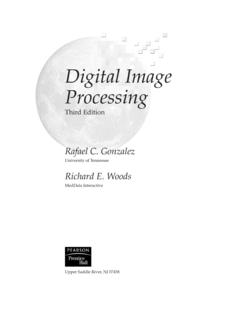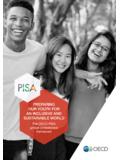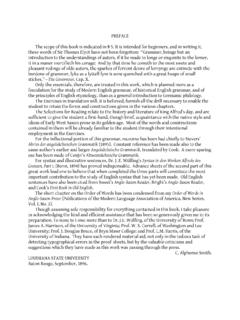Transcription of CHAPTER 3 RESEARCH DESIGN AND METHODOLOGY …
1 36. CHAPTER 3. RESEARCH DESIGN AND METHODOLOGY . Introduction The review of literature has produced reoccurring themes emphasizing the importance of technological literacy for citizens in the 21st Century (Garfinkel, 2003;. Hall, 2001; Lemke, 2003; Murray, 2003; NAE, 2002; Partnership for 21st Century Skills, 2003; Rose & Dugger, 2003; Zhao & Alexander, 2002; Department of Education, 2004; Technology Counts, 2005). Education is a critical component in preparing students for a knowledge-based, digital society. According to Hall (2001), available technologies, our perceptions of those technologies, and how they are used will determine the shape of our world. Citizens of the future will face challenges that depend on the development and application of technology. Are we preparing students, the citizens of tomorrow, for these challenges? Purpose of the Study This study developed and implemented a faculty survey and a student assessment. The purpose of the faculty survey was to determine what basic computer skills are needed by undergraduate students for academic success in post-secondary education.
2 This phase of the study examined the data collected for trends and differences between the independent variables of subject/content area, institution, gender, and years of faculty experience. The purpose of the student assessment was to evaluate the computer competencies of students entering a post-secondary education. This phase of the study examined the data collected for trends and differences between the independent variables 37. of home state, number of high school computer courses taken, gender, and major field of study? Data collection and analysis assisted in determining if students possess the necessary computer/technology skills entering a post-secondary institution or if a need exists for a general education course to teach computer literacy/skills to the undergraduate student population. This study also provided valuable information in regards to the content of such a course. RESEARCH Questions 1. What technology skills do post-secondary faculty members deem important for all students to possess at the college level?
3 2. Are there differences between the student technology skills post-secondary faculty members deem important when grouped by subject/content area, institution/stratum, gender, years of faculty experience? 3. What technology skills can students demonstrate proficiently upon entering a post-secondary institution? 4. Are there differences between the proficiency level of students' technology skills when grouped by home state, number of high school computer courses, gender, or major field of study? 5. Are students technologically ready entering post-secondary education or does a need exist for a computer literacy/skills course for all undergraduate students? Instrumentation Two instruments were employed for data collection in this RESEARCH study: a faculty survey and a student assessment. A faculty survey was designed by the researcher 38. to help identify technology/computer skills deemed important for undergraduate students to possess in order to be successful in their post-secondary endeavors.
4 A survey RESEARCH DESIGN was applied to investigate the RESEARCH questions. A second instrument was developed and implemented to assess technology skills of freshmen undergraduate students who had not yet taken a post-secondary computer literacy/skills course. A description of the two instruments used in this study follows. Faculty Survey Introduction According to Leedy and Ormrod (2001), RESEARCH is a viable approach to a problem only when there are data to support it (p. 94). Nesbary (2000) defines survey RESEARCH as the process of collecting representative sample data from a larger population and using the sample to infer attributes of the population (p. 10). The main purpose of a survey is to estimate, with significant precision, the percentage of population that has a specific attribute by collecting data from a small portion of the total population (Dillman, 2000; Wallen & Fraenkel, 2001). The researcher wanted to find out from members of the population their view on one or more variables.
5 As noted by Borg and Gall (1989), studies involving surveys comprise a significant amount of the RESEARCH done in the education field. Data are ever-changing and survey RESEARCH portrays a brief moment in time to enhance our understanding of the present (Leedy & Ormrod, 2001). Educational surveys are often used to assist in planning and decision making, as well as to evaluate the effectiveness of an implemented program (McNamara, 1994; Borg & Gall, 1989). 39. An online faculty survey was conducted to identify computer literacy skills that faculty members deem important for an undergraduate student to possess in order to be academically successful at the post-secondary level. Population and Sample The population for this faculty survey consisted of post-secondary faculty members at four-year public institutions in the state of Missouri. Four-year public institutions were determined by visiting the Missouri Department of Higher Education Web site at Private or independent institutions and community colleges were not included in the population.
6 Thus the sampling frame consisted of all faculty members at thirteen institutions in Missouri, as summarized in Table 1. Table 1. Summary of 4-Year Public Institutions in Missouri Central Missouri State University Harris-Stowe State College Lincoln University Missouri Southern State University Missouri Western State College Northwest Missouri State University Southeast Missouri State University Southwest Missouri State University Truman State University University of Missouri-Columbia University of Missouri-Kansas City University of Missouri-Rolla University of Missouri-St. Louis A sample population was drawn from the sampling frame. A sampling frame includes the actual list of individuals included in the population (Nesbary, 2000) which was approximately 4821 faculty members. According to Patten (2004), the quality of the 40. sample affects the quality of the RESEARCH generalizations. Nesbary (2000), suggests the larger the sample size, the greater the probability the sample will reflect the general population.
7 However, sample size alone does not constitute the ability to generalize. Patten (2004), states that obtaining an unbiased sample is the main criterion when evaluating the adequacy of a sample. Patten also identifies an unbiased sample as one in which every member of a population has an equal opportunity of being selected in the sample. Therefore, random sampling was used in this study to help ensure an unbiased sample population. Because random sampling may introduce sampling errors, efforts were made to reduce sampling errors, and thus increasing precision, by increasing the sample size and by using stratified random sampling. To obtain a stratified random sample, the population was divided into strata according to institutions as shown in Table 2. Typically, for stratified random sampling, the same percentage of participants, not the same number of participants, are drawn from each stratum (Patten, 2004). Table 2. Strata (subgroups) for Stratified Random Sampling Instructors and professors at Central Missouri State University Instructors and professors at Harris-Stowe State College Instructors and professors at Lincoln University Instructors and professors at Missouri Southern State University Instructors and professors at Missouri Western State College Instructors and professors at Northwest Missouri State University Instructors and professors at Southeast Missouri State University Instructors and professors at Southwest Missouri State University Instructors and professors at Truman State University Instructors and professors at University of Missouri-Columbia Instructors and professors at University of Missouri-Kansas City Instructors and professors at University of Missouri-Rolla Instructors and professors at University of Missouri-St.
8 Louis 41. Patten (2004) suggests that a researcher should first consider obtaining an unbiased sample and then seek a relatively large number of participants. Patten (2004). provides a table of recommended sample sizes. A table of recommended sample sizes (n). for populations (N) with finite sizes, developed by Krejcie and Morgan and adapted by Patten (2004), was used to determine estimated sample size. According to the table, and for purposes of this study, the researcher used an estimated population size N = 4821 and thus a sample size goal of n = 357. Survey Procedures In 1998, according to Nesbary (2000), Web surveys were almost non-existent in the public sector. Nesbary decided to test the waters and conduct three surveys to compare response rate and response time of Web surveys to regular mail surveys. Survey results and respondent feedback of all three surveys indicated that Web surveys were more cost effective, easier to use, had quicker response rates, and greater responses.
9 One of Nesbary's Web surveys was distributed to selected universities. Of those surveyed, respondents indicated a strong preference for use of technology to take advantage of speed and convenience. The researcher used a Web-based survey for the faculty survey portion of this study. UNL IRB approval was obtained (Appendix A). Two approvals for change of protocol were also obtained, one for changing the title of the study (Appendix B) and the other for changing the survey format (Appendix C). From the original IRB request, the survey was condensed to reduce the number of items, shortening the survey to increase response rate. 42. Ethical Issues McNamara (1994) identifies five ethical concerns to be considered when conducting survey RESEARCH . These guidelines deal with voluntary participation, no harm to respondents, anonymity and confidentiality, identifying purpose and sponsor, and analysis and reporting. Each guideline will be addressed individually with explanations to help eliminate or control any ethical concerns.
10 First, researchers need to make sure that participation is completely voluntary. However, voluntary participation can sometimes conflict with the need to have a high response rate. Low return rates can introduce response bias (McNamara, 1994). In order to encourage a high response rate, Dillman (2000) suggests multiple contacts. For this study, up to five contacts were made per potential participant. The first email contact (Appendix D) was sent a few days preceding the survey to not only verify email addresses, but also to inform possible participants of the importance and justification for the study. The second email contact (Appendix E) was the actual email cover letter explaining the study objectives in more depth. This email consisted of a link to the Web- based survey and a password to enter. By clicking on the link provided and logging into the secure site, the participant indicated agreement to participate in the RESEARCH study. The third email contact (Appendix F) was sent a week later reminding those that had not responded.



